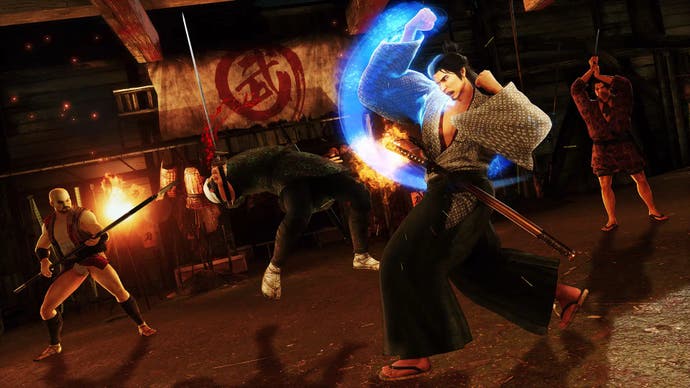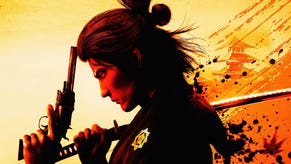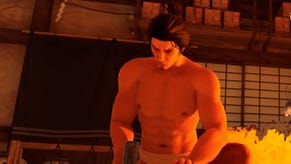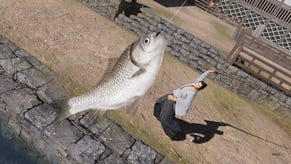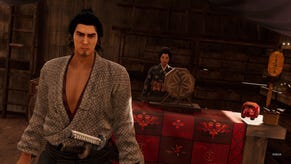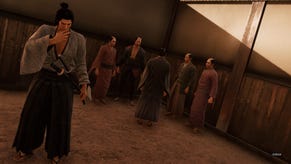Like A Dragon: Ishin! review - both a Yakuza greatest hits and a somewhat dated remake
Baku-Mitai.
After Ryu Ga Gotoku Studio overhauled the series' formula with Yakuza: Like a Dragon by giving us an open world, turn-based JRPG with a new protagonist in a new location, Like a Dragon: Ishin would appear to be the next logical step forward. After all, it takes the subtitle of the previous game (a literal translation of its Japanese title), gives us another different location, and, like an increasing number of games from Japanese developers, swaps out its proprietary Dragon Engine for Unreal. In practice, though, it's actually a case of looking back and fulfilling a near-decade long request from fans in the West.
Set during the turbulent Bakumatsu period in 1860s Japan, in the twilight of the ruling Shogunate, Ishin first released on PS3 and PS4 in 2014 but, thanks to the series' niche status and the idiosyncrasies of the period, had always been deemed unlikely to ever be localised for audiences outside of Japan. Yet if there was ever a samurai game that would connect with Western audiences, surely it would be one set in a period when Japan began trading with Western nations and ending its long period of self-isolation.
For newcomers, this is also as good an entry point as Yakuza 0, despite being located in 19th century Kyoto (then known as Kyo) rather than the usual urban grit of contemporary Tokyo. That's largely because all the series' characters are still here, only with different names, essentially playing different roles in a costume drama, so you don't need to be familiar with their history.
Longtime fans can however appreciate what's essentially a greatest hits roster, as it's not just long-time protagonist Kiryu as samurai and historical figure Sakomoto Ryoma (following the Japanese tradition where the given name comes after the family name). Familiar faces return from just about every single mainline instalment, including the likenesses of some characters that appeared in entries released after Ishin's initial release.
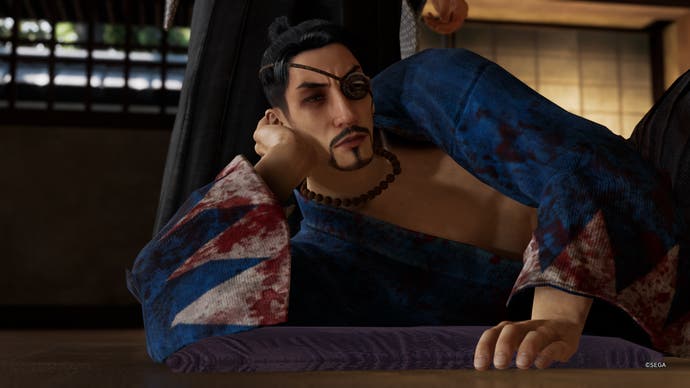

Unlike Like a Dragon's turn-based battles, Ishin is a return to real-time brawling, only instead of using just his fists, Ryoma's also armed with a katana and pistol, or both at once, and you can swap between each fighting style with the tap of the d-pad. There is however a strange dissonance in playing a character with the face of Kiryu, a stoic protagonist who canonically doesn't kill, but who regularly runs his blade through hundreds of street ruffians and spills buckets of blood - even if you'll usually see those enemies alive and grovelling at your feet afterwards.
While there is the option to turn off the blood, it's a shame that sticking to your fists is less effective in the long run, as weapons simply deal more damage, especially as you can acquire better gear over the course of the campaign or make them at the smithy. The more fights you get into, the more you'll gain soul orbs, which are used to unlock skill trees for longer attack combos as well as unique Heat actions. These contextual attacks require filling up a circular Heat gauge to use but deliver the game's more cinematic and brutal takedowns. My favourite is where if you're by a riverbank, Ryoma just knocks his opponent straight into the water, making quick work of that fight. Even then, boss fights remain an annoyingly spongy affair, with several that warrant turning down the difficulty for, and it's especially disheartening spending your gauge on Heat moves only to see it deliver a negligible amount of damage.
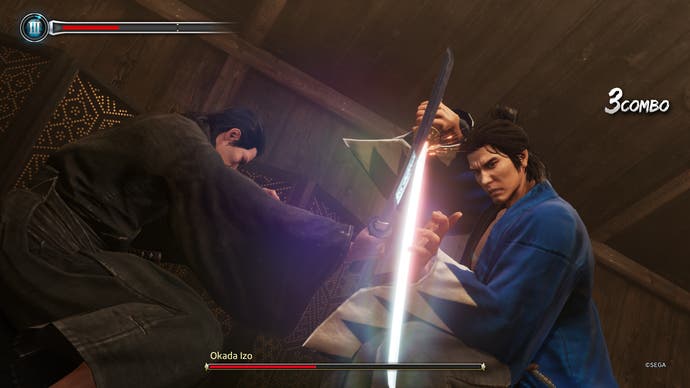

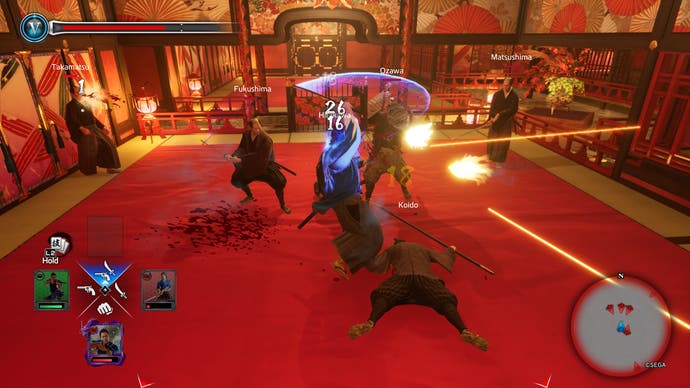
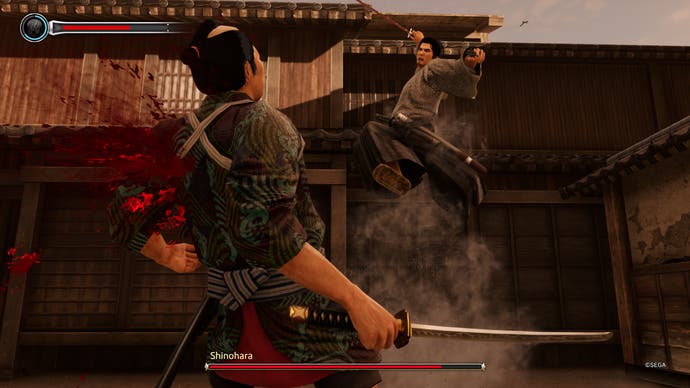
Although you're often assailed by ronin on the street, it's the times when you see someone causing trouble that you're compelled to step in and teach them a lesson. Similarly, the most compelling aspects of Ishin come from optional distractions where once your attention is drawn to it, you can't help but investigate. It also helps that doing more of the side activities also earns you Virtue, which in turn can be used to unlock perks such as improved running stamina or upgrades to a whole farming sim mini-game. At times they're goofy, some are more rote where you build up a bond by giving an NPC a requested item each time you pass by - although a quest where a horny lady is asking for very phallic-shaped vegetables manages to be both. More interesting are side quests that provide a glimpse of the Bakumatsu period's socio-political upheavals.
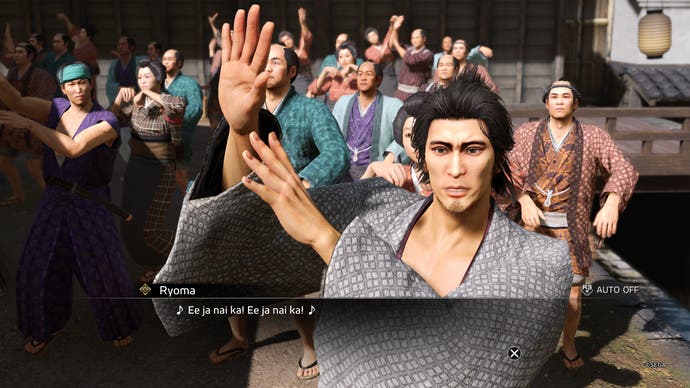
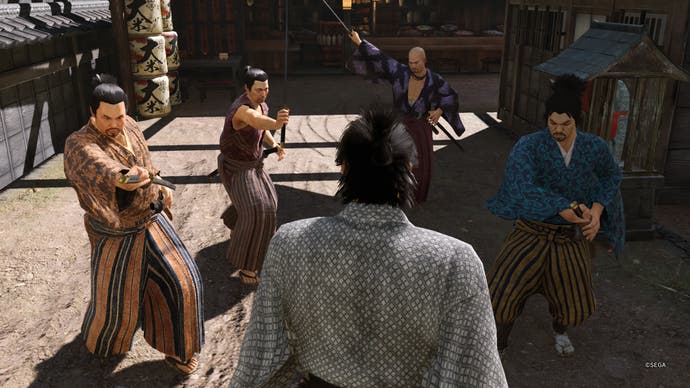
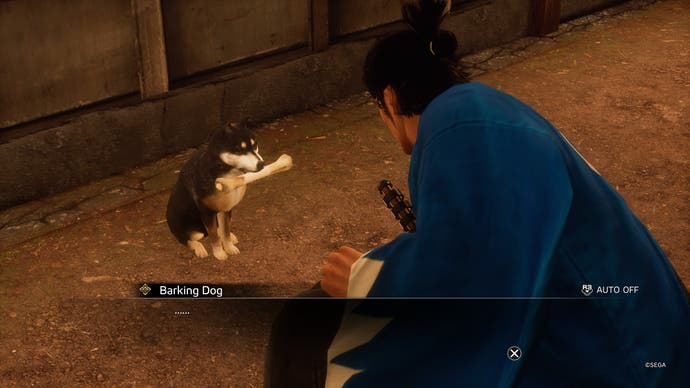
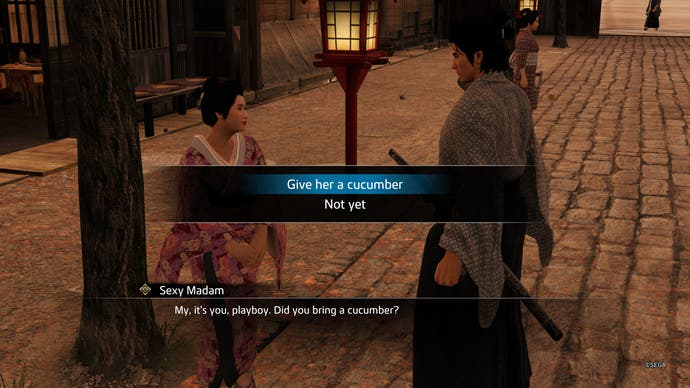
One series of sub stories, for instance, has Ryoma encountering a kind of anarchic street dance with the refrain 'Ee ja nai ka' that was often synonymous with social and political protest but also used as an excuse for unsavoury folk to whip up mob violence. And while this was a period where Japan was forced to open up owing to the 'black ships' on its doorstep, we also meet Western characters earnestly seeking a cultural exchange with the Japanese while running into xenophobic extremists. These smaller, more human stories do better to capture the mood of the times than the main story's ponderous exchanges of political intrigue. Not just sharing Kiryu's face, Ryoma is likewise an idealist who wants to change Japan for the better, namely throwing off its feudal class-based society, but that passion is something that often gets lost in the main story's tendencies to have us sit through lengthy cutscenes explaining what just happened, what really happened, or what's going to happen next.
But as the disclaimer notes at the beginning, Ishin isn't meant to be a history lesson. While some scenes are based on real incidents or events, it has no qualms with fictionalising the contexts to fit the well-worn Yakuza narrative tradition of double-crossings and secret identities. Notably, our Kiryu doppelganger is actually doubling as two historical figures, Ryoma the revolutionary but also Saito Hajime, a captain of the Bakufu's fearful paramilitary the Shinsengumi, but here the former is taking on the alias of the latter.

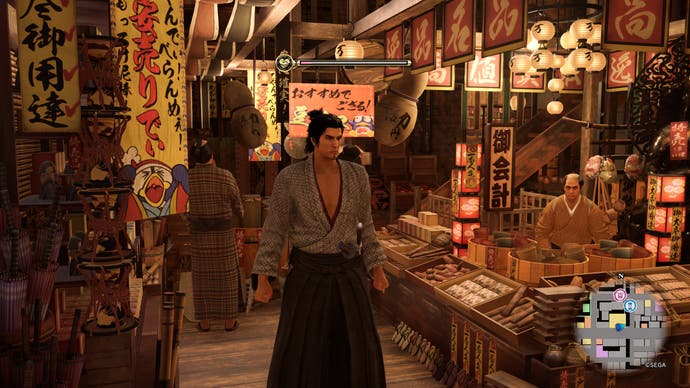
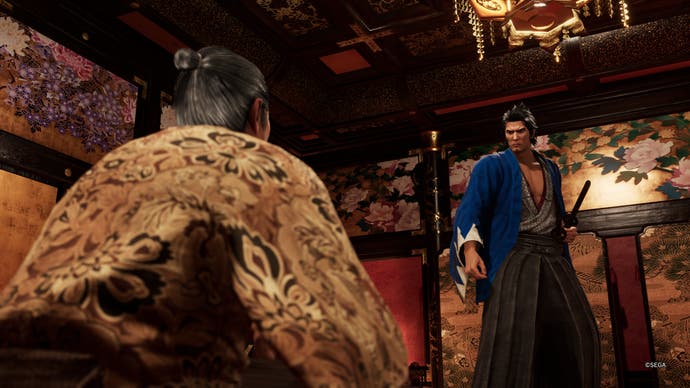
More bizarrely, you'll also find 19th century versions of real-life modern businesses like Don Quijote and Watami that have featured in the mainline games, while you can still belt out 'Baka Mitai' on stage at a singing bar's rhythm-based mini-game in place of karaoke's invention a century later; even the localisation team has opted for a more modern translation, though I did find it jarring when very early on an NPC greets Ryoma with, "It's been a minute."
These kinds of anachronisms might seem a little distracting, but I find them more authentic and earned coming from RGG, a Japanese studio that had made Ishin first and foremost as a Yakuza/Like a Dragon game for a Japanese audience, rather than a game about Japan that's been culturally fetishised for a global one. Tellingly, there's a cinematic filter available that's not going out of its way to emulate the films of Kurosawa.
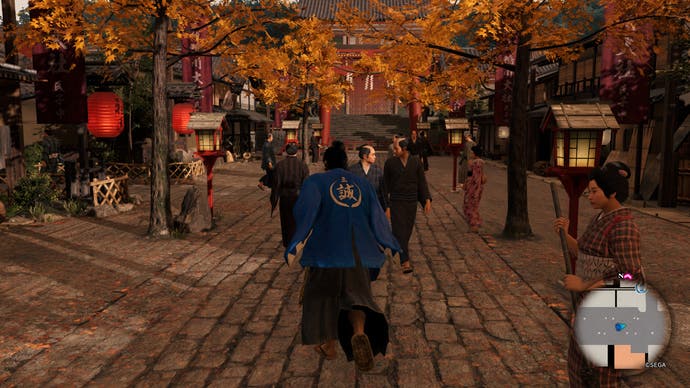
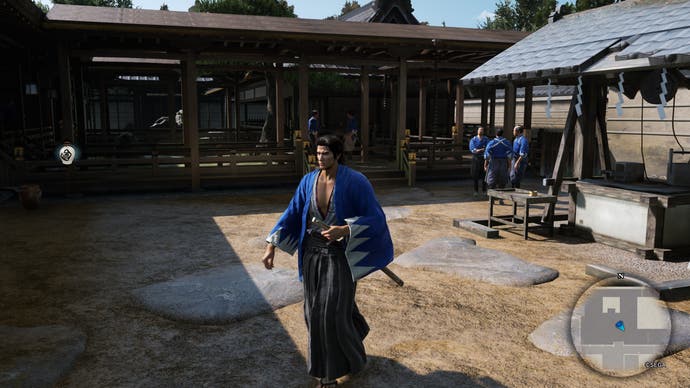
Where Ishin does disappoint is that it isn't quite on the level of other current-gen remakes we have seen. Despite being rebuilt from the ground up in Unreal Engine 4, it feels as though the team has stuck with the same building plans as the original, where loading screens separate interiors and neighbouring locations, while NPCs retain the awkward, late-PS3 marionette look and movements, making this remake more on the level of Kiwami 1 than Kiwami 2. Of course, both of those games were still huge leaps from their PS2 originals, but Ishin, already a PS4 game, looks less a remake than a remaster. Perhaps owing to the team's inexperience with Unreal, it's sometimes worse, with characters outside of story cinematics poorly lit at times, while I also encountered some unintentionally hilarious glitches with NPCs sticking in the environment or enemies suddenly suspended in mid-air during a fight.
I can imagine that Japanese players may find the question of whether this remake is worth forking out for more contentious, but for Western fans who have been clamouring for Ishin for close to a decade, just being able to finally play this samurai spin-off fully localised is enough. Yet even after the long wait, there's a nagging sense that it could have been more.
